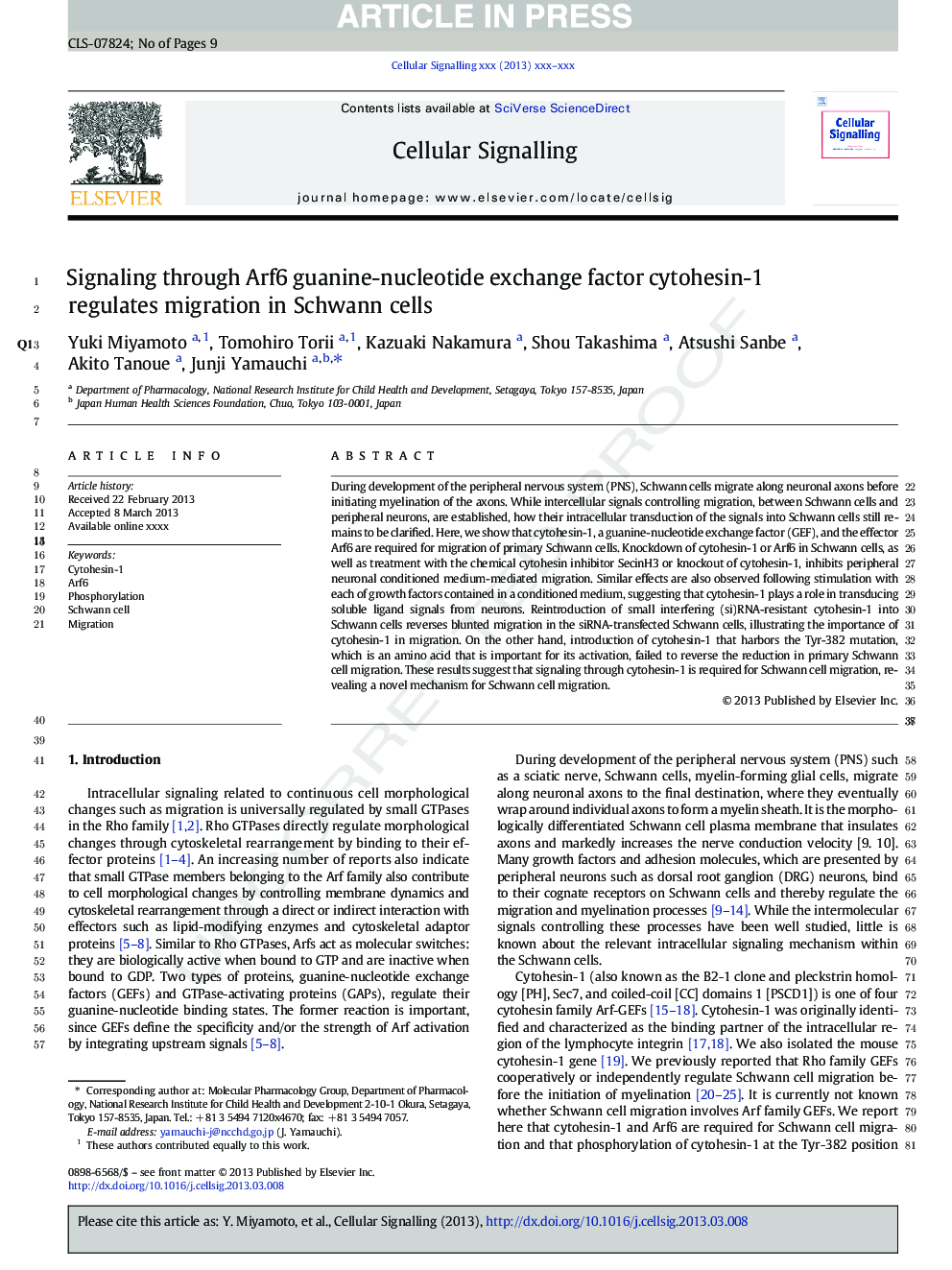| Article ID | Journal | Published Year | Pages | File Type |
|---|---|---|---|---|
| 1964412 | Cellular Signalling | 2013 | 9 Pages |
Abstract
During development of the peripheral nervous system (PNS), Schwann cells migrate along neuronal axons before initiating myelination of the axons. While intercellular signals controlling migration, between Schwann cells and peripheral neurons, are established, how their intracellular transduction of the signals into Schwann cells still remains to be clarified. Here, we show that cytohesin-1, a guanine-nucleotide exchange factor (GEF), and the effector Arf6 are required for migration of primary Schwann cells. Knockdown of cytohesin-1 or Arf6 in Schwann cells, as well as treatment with the chemical cytohesin inhibitor SecinH3 or knockout of cytohesin-1, inhibits peripheral neuronal conditioned medium-mediated migration. Similar effects are also observed following stimulation with each of growth factors contained in a conditioned medium, suggesting that cytohesin-1 plays a role in transducing soluble ligand signals from neurons. Reintroduction of small interfering (si)RNA-resistant cytohesin-1 into Schwann cells reverses blunted migration in the siRNA-transfected Schwann cells, illustrating the importance of cytohesin-1 in migration. On the other hand, introduction of cytohesin-1 that harbors the Tyr-382 mutation, which is an amino acid that is important for its activation, failed to reverse the reduction in primary Schwann cell migration. These results suggest that signaling through cytohesin-1 is required for Schwann cell migration, revealing a novel mechanism for Schwann cell migration.
Related Topics
Life Sciences
Biochemistry, Genetics and Molecular Biology
Biochemistry
Authors
Yuki Miyamoto, Tomohiro Torii, Kazuaki Nakamura, Shou Takashima, Atsushi Sanbe, Akito Tanoue, Junji Yamauchi,
